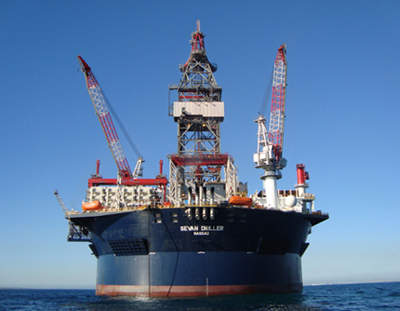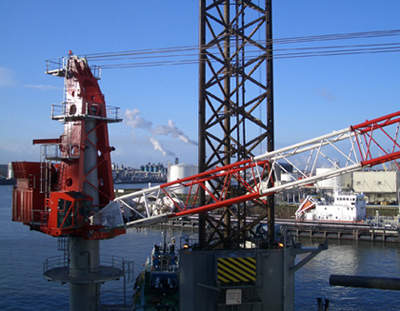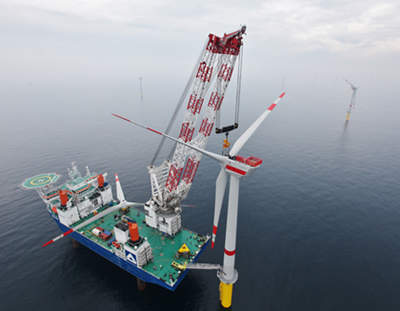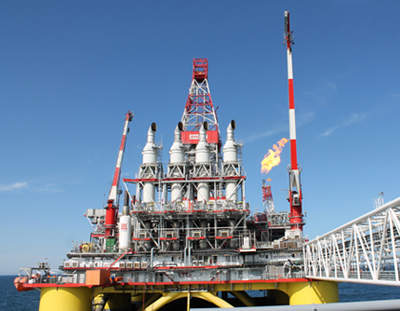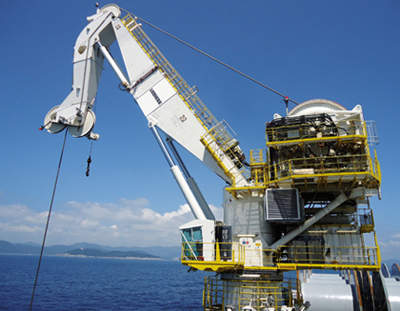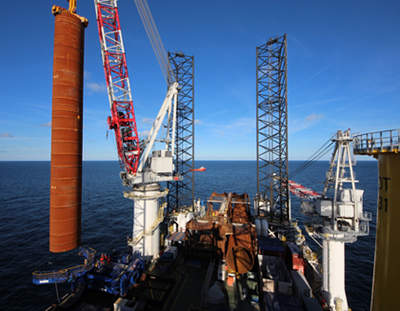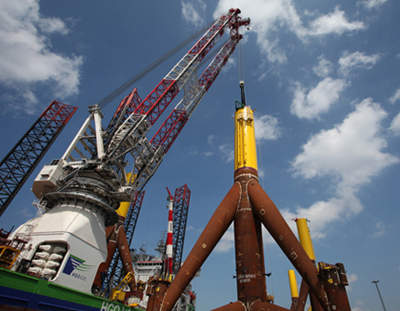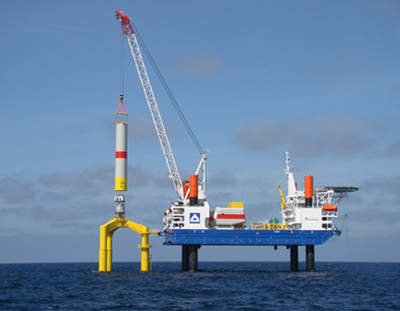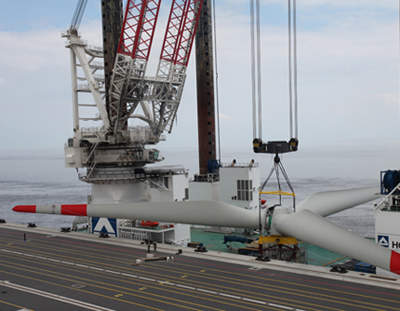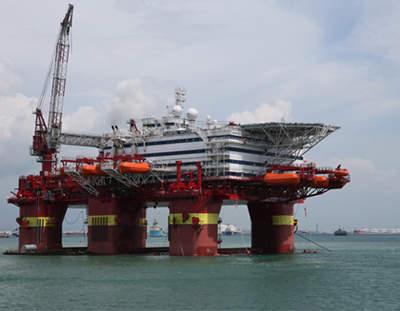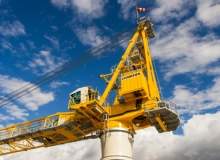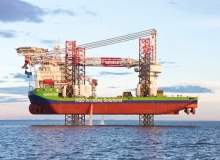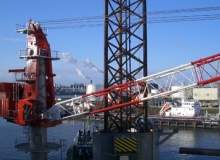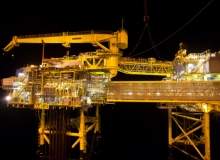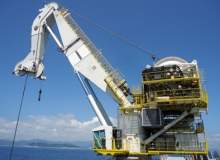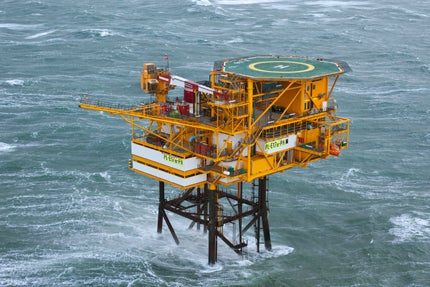
Since the beginning of offshore technology, Liebherr has been involved in the development of appropriate cranes for offshore applications and today is the technology leader in this segment.
Today, offshore is one of the most innovative and technologically demanding industry segments. The constant increase in worldwide energy demands and the development of ever more demanding sea beds go hand-in-hand with the advancement of crane technology. These demands have lead to considerable changes in the requirements and possibilities of our cranes.
Besides being used on oil and gas platforms, Liebherr cranes are also used in other applications, including subsea work and installation of offshore wind turbines, for handling remote controlled underwater vehicles, or for installing pipelines and telecommunication cables offshore.
Offshore cranes
Offshore deployment requires efficiency, reliability and a high degree of safety. Liebherr offers versatile offshore crane types in various sizes to achieve this. This embraced all series of board offshore cranes (BOS), mast-type cranes (MTC), crane around the leg (CAL), ram luffing (RL) cranes and ram luffing, knuckle boom (RL-K) cranes.
Liebherr’s range of crane technology includes diesel and electric drive units, explosion safe and suitable for use in temperatures to -50°C or special lifting heights to 2,000m under the sea. Liebherr has in its product palette rope luffing cranes and ram luffing cranes. Cranes with slew bearings or mast type cranes are also available.
Liebherr offshore cranes are user-friendly and offer easy maintenance, as well as reliability and quality standard.
Areas of application
The product range of offshore cranes from Liebherr is designed for a wide variety of deployment such as heavy lifts, oil and gas industry or pipe handling and subsea operations and designed for many different types of installation.
Heavy lift operations
Heavy lift deployment, such as operations involving the erection of wind parks or the assembly of oil rigs, require the highest level of precision and safety. Liebherr offshore cranes are designed especially for these challenging tasks.
With decades of experience in development and construction, Liebherr has designed a heavy-duty crane for a load bearing capacity of up to 2,000t.
For example, the CAL is designed in particular for jack-up vessels. These vessels can drive to their deployment site with their own drive system and support themselves there on the sea bed with the aid of four lowerable mainstays.
As its name suggests, the CAL is installed around one of the legs. Furthermore, the parallel jib can also be placed over one of the legs. In this way, the maximum loading area on deck is available despite the size of the crane.
Cranes for the oil and gas industry
Liebherr offshore cranes are deployed for the assembly, repair and supply of oil and gas extraction systems. The performance capacity, size and also the way the cranes are constructed varies according to the respective requirements profile.
The Liebherr RL crane is designed as a compact and weight-optimised crane for jack-up rigs or smaller and unmanned platforms and is used primarily for support or maintenance tasks.
Cranes of the BOS-series are mainly installed on floating installations where larger boom lengths and higher loads are needed.
Pipe handling and subsea operations
Setting-up oil and gas extraction systems underwater requires the use of specially equipped cranes. For this area, Liebherr offers the RL-K crane with special pipe handling and subsea equipment.
The subsea crane can be used to support all necessary tasks such as setting-up or dismantling conveying equipment, repairs or activities onboard.
Crane management systems
The one-of-a-kind crane management system, Litronic, developed by Liebherr, allows monitoring and controlling of all crane functions and supports an outlook on preventive maintenance strategies through recording load cycles and machine data.
Innovation and quality
Components for building a Liebherr offshore crane are only used after they have been installed in the field and have gone through an extensive qualification process. New developments concentrate on the advancement of existing systems and solutions considering market specific requirements and technological developments.
With this strategy, Liebherr will continue to strengthen and expand its position in the offshore sector.


